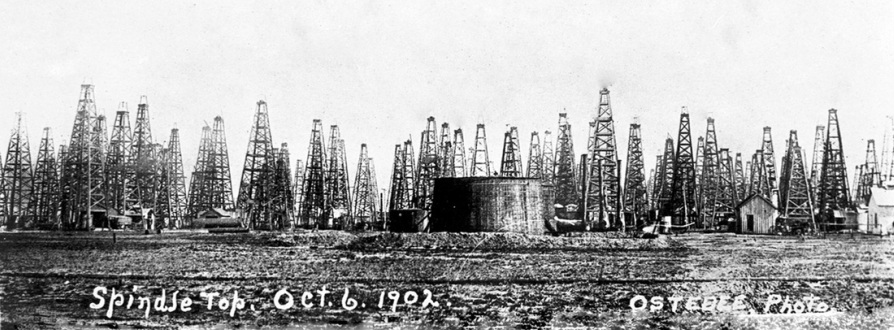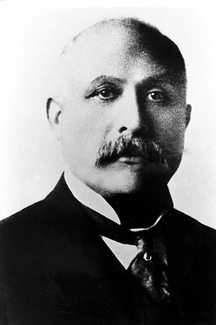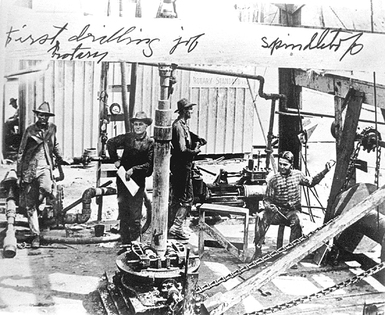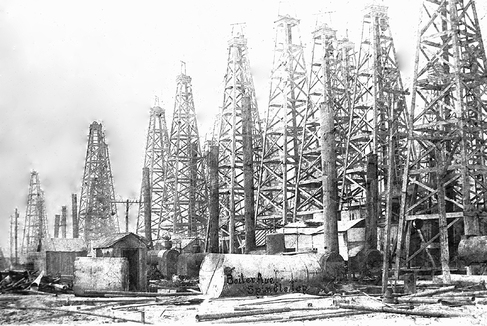what year was spindletop discovered what year did women earn the right to vote
Spindletop History

At the beginning of the twentieth century, the Southeast Texas economy, like that of nearly of the Southward, relied on subsistence agriculture, but cattle ranching and the lumber business organisation were also important. Large ranches sent cattle to New Orleans, and mills in Beaumont and Orangish produced lumber for shipment to the rest of America and overseas. Southeast Texas had another resources - oil - but the amount underground remained a mystery.
People knew of oil in the area for hundreds of years before any substantial product began. In 1543 the Spanish used the oil from seeps near Sabine Pass for caulking their ships, although local Indians certainly knew of oil much earlier. To the due north, settlers nearly Nacogdoches used seeping oil for lubricants before 1800. In 1847 the settlers at Sour Lake noticed that oil was bubbling to the surface, and after the Civil War Dick Dowling tried unsuccessfully to drill a well nearly in that location. In that location were numerous discoveries in eastward and central Texas in the later years, especially at Corsicana in 1896. Wildcatters drilled at Spindletop in 1893 and 1896 and at Sour Lake in 1896. However, there was no significant oil production along the Gulf Declension until the gusher at Spindletop in 1901. Total Texas oil production was 836,000 barrels in 1900, a minor fraction of national product (63 million barrels).
Listen to Patillo Higgins talk virtually his life and work at Spindletop and other Texas oil fields through The Academy of Texas Briscoe Center for American History's "Oral History of the Texas Oil Industry." Likewise bachelor are oral histories from Al and Curt Hamill, and other early oil pioneers recorded in the early 1950s.  The Spindletop oilfield, discovered on a common salt dome formation south of Beaumont in eastern Jefferson County on Jan 10, 1901, marked the birth of the modern petroleum manufacture. The Gladys City Oil, Gas, and Manufacturing Company, formed in August 1892 past George W. O'Brien, George West. Carroll, Pattillo Higgins, Emma E. John, and J. F. Lanier, was the beginning visitor to drill on Spindletop Loma. Three shallow attempts, beginning in 1893 and using cable-tool drilling equipment were unsuccessful; Lanier and Higgins had left the company by 1895.
The Spindletop oilfield, discovered on a common salt dome formation south of Beaumont in eastern Jefferson County on Jan 10, 1901, marked the birth of the modern petroleum manufacture. The Gladys City Oil, Gas, and Manufacturing Company, formed in August 1892 past George W. O'Brien, George West. Carroll, Pattillo Higgins, Emma E. John, and J. F. Lanier, was the beginning visitor to drill on Spindletop Loma. Three shallow attempts, beginning in 1893 and using cable-tool drilling equipment were unsuccessful; Lanier and Higgins had left the company by 1895.
Anthony F. Lucas, the leading United States expert on salt dome formations, made a charter with the Gladys City Company in 1899. Higgins and Lucas made a separate agreement a month later. With Lucas in charge of the drilling operation, some other attempt was fabricated on the John Allen Veatch survey on Gladys Metropolis Company lands. Lucas was able to drill to a depth of 575 feet before running out of money. He was also having bully difficulty with the catchy sands of the salt dome. Despite the negative reports from contemporary geologists, Lucas remained convinced that oil was in the salt domes of the Gulf Coast. He finally secured the assistance of John H. Galey and James M. Guffey of Pittsburgh. Much of the Guffey and Galey back up was financed in turn past the Mellon interest; their terms excluded Higgins and left Lucas with just a pocket-size share of the potential profits. Nonetheless, Lucas pressed ahead in his effort to vindicate his theories. Galey and Guffey played a crucial part by bringing in Al and Curt Hamill, an experienced drilling squad from Corsicana.
Lucas spudded in a well on October 27, 1900, on McFaddin-Wiess and Kyle land that adjoined the Gladys City Company lands. A new heavier and more efficient rotary type fleck was used. From October to January 1901, Lucas and the Hamills struggled to overcome the difficult oil sands, which had stymied previous drilling efforts. On January 10, mud began bubbles from the pigsty. The startled roughnecks fled as six tons of four-inch drilling pipage came shooting up out of the ground. After several minutes of quiet, mud, then gas, then oil spurted out. The Lucas geyser, found at a depth of 1,139 feet, blew a stream of oil over 100 anxiety loftier until it was capped nine days subsequently and flowed an estimated 100,000 barrels a solar day. Lucas and the Hamills finally controlled the geyser on January nineteen, when a huge puddle of oil surrounded it, and throngs of oilmen, speculators, and onlookers had transformed the city of Beaumont.
A new age was born. The globe had never seen such a gusher before. By September 1901, there were at to the lowest degree six successful wells on Gladys Metropolis Company lands. Wild speculation drove land prices around Spindletop to incredible heights. One man who had been trying to sell his tract there for $150 for three years sold his land for $20,000; the buyer promptly sold to some other investor within xv minutes for $50,000. One well, representing an initial investment of under $10,000, was sold for $ane,250,000. Beaumont'southward population rose from 10,000 to 50,000. Legal entanglements and multimillion-dollar deals became almost commonplace. An estimated $235 million had been invested in oil that twelvemonth in Texas; while some had made fortunes, others lost everything.
 The overabundance of wells at Spindletop led to a rapid refuse in production. Afterwards yielding 17,500,000 barrels of oil in 1902, the Spindletop wells were downwards to 10,000 barrels a day in Feb 1904. Deposits from the shallow Miocene caprock seemed to diminish, but the Spindletop oilfield had not yet stale out.
The overabundance of wells at Spindletop led to a rapid refuse in production. Afterwards yielding 17,500,000 barrels of oil in 1902, the Spindletop wells were downwards to 10,000 barrels a day in Feb 1904. Deposits from the shallow Miocene caprock seemed to diminish, but the Spindletop oilfield had not yet stale out.
A second boom came when Marrs McLean speculated that production could be found on the flanks of the dome. Miles F. Yount too believed more than oil was nowadays at deeper depths. Their convictions proved correct; on November 13, 1925, the Yount-Lee Oil Company brought in a flank well drilled to five,400 feet. This and other discoveries on the flanks of the salt dome set off another speculative nail. The Gladys Urban center Company participated with the Yount-Lee Oil Company and others in this 2d nail. Although this second wave was more than controlled than the first, competition was peachy; 1 detail one-acre tract sold for $200,000. By 1927 Spindletop product reached its all-time annual high of 21,000,000 barrels. Within five years 60,000,000 barrels had been produced, largely from the new-found deeper Marginulin sands of the flank wells. Additional deposits were establish in the Midway (Eocene) formations in 1951. Over 153,000,000 barrels of oil had been produced from the Spindletop fields by 1985.
 The discovery of the Spindletop oilfield had an near incalculable outcome on globe history, likewise every bit Texas history. Eager to find similar deposits, investors spent billions of dollars throughout the Alone Star state in search of oil and natural gas. The cheap fuel they found helped to revolutionize American transportation and industry. Storage facilities, pipelines, and major refining units were built in the Beaumont, Port Arthur, Sabine Pass, and Orange areas around Spindletop.
The discovery of the Spindletop oilfield had an near incalculable outcome on globe history, likewise every bit Texas history. Eager to find similar deposits, investors spent billions of dollars throughout the Alone Star state in search of oil and natural gas. The cheap fuel they found helped to revolutionize American transportation and industry. Storage facilities, pipelines, and major refining units were built in the Beaumont, Port Arthur, Sabine Pass, and Orange areas around Spindletop.
By 1902, there were more 500 Texas corporations doing concern in Beaumont. Many of the major oil companies were born at Spindletop or grew to major corporate size as a consequence of their interest at Spindletop. The Texas Company (later Texaco), Gulf Oil Corporation, Dominicus Oil Company, Magnolia Petroleum Company, and Humble (afterwards Exxon Company, United states of americaA.) were a few of the major corporations.
The Spindletop oilfield again boomed in the 1950s, with the production of sulphur by Texas Gulf Sulphur Visitor (later Texasgulf ), until nearly 1975. Salt-alkali extraction became a lucrative operation in the 1950s. In 1963–66 fifty-fifty deeper oil product was achieved with an average depth of ix,000 feet. The old field connected in the 1990s to yield very limited oil production in the form of stripper wells and salt brine production. Some parts of the table salt dome cavities were being adult equally storage facilities for petroleum products.
In commemoration of the importance of the evolution of Spindletop oilfield, a Texas pink granite monument was erected in 1941 near the site of the Lucas gusher. The withdrawal of oil, sulphur, and alkali from beneath the surface, even so, caused the Spindletop dome to subside, and the monument was moved to the recreated Spindletop/Gladys City Boomtown Museum across the highway on the Lamar University campus at Beaumont. The Gladys Urban center Company, equally well as many major oil companies, continued to reap the benefit of their involvement in the discovery of the Spindletop oilfield. - from The Handbook of Texas Online
Source: https://www.lamar.edu/spindletop-gladys-city/spindletop-history.html
0 Response to "what year was spindletop discovered what year did women earn the right to vote"
Post a Comment